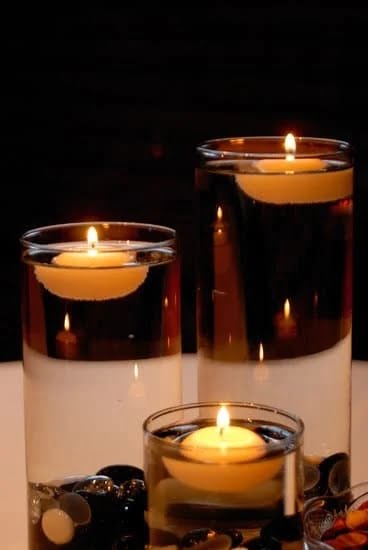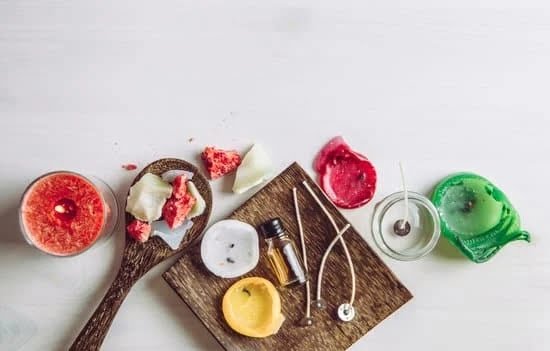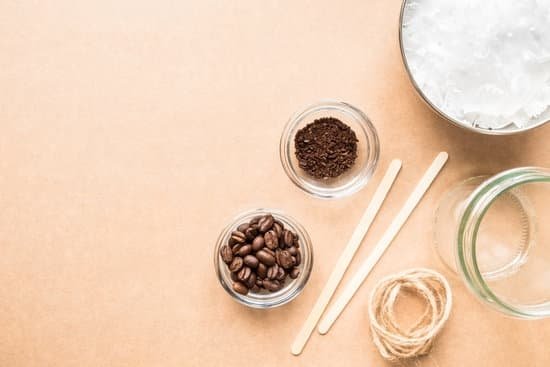Candles have always been a popular way to create ambiance, mood, and relaxation in our homes. But what if you could take your candle-making game to the next level? Enter essential oils – the secret ingredient that can elevate your candles from ordinary to extraordinary. In this article, we will explore just how essential oils can be used in candle making and discover the magic they bring to your creations.
Essential oils are highly concentrated plant extracts that are known for their aromatic properties and therapeutic benefits. From calming lavender to invigorating citrus, there is an essential oil for every preference and purpose. When added to candles, these aromatic oils infuse the wax with their exquisite scents, creating a multisensory experience that can enhance your mood, promote relaxation, or invigorate and uplift you throughout the day.
But using essential oils in candle making is not just about fragrance; it’s also about creating a unique ambiance that resonates with you and your space. Whether you desire a cozy atmosphere for a romantic dinner, a refreshing scent for an energizing workout session, or a soothing aroma for unwinding after a long day, incorporating essential oils allows you to customize your candles to suit any occasion.
Harnessing the power of essential oils and combining it with the art of candle making opens up endless possibilities for creativity and self-expression. In the following sections of this article, we will delve deeper into understanding different types of essential oils and their properties.
We will also discuss how to select the perfect scents for different purposes and explore safety precautions when working with these potent plant extracts. So get ready to embark on a journey of discovery as we explore the magic of essential oils in candle making.
Understanding Essential Oils
Essential oils are the backbone of scented candles, as they provide the captivating aromas that make candles so enjoyable. Understanding essential oils and their different types and properties is crucial for successful candle making.
Types of Essential Oils
There are various types of essential oils available, each with its own unique scent profile and benefits. Some popular types of essential oils used in candle making include:
- Lavender: Known for its calming and soothing properties, lavender essential oil is a favorite choice for relaxation candles.
- Peppermint: With its refreshing and invigorating scent, peppermint essential oil is often used in candles meant to energize and uplift.
- Citrus: Essential oils derived from citrus fruits like orange, lemon, or grapefruit impart a bright and cheerful aroma to candles.
- Eucalyptus: Eucalyptus essential oil offers a refreshing and clearing scent that is perfect for creating an atmosphere of cleanliness and tranquility.
- Sandalwood: This rich and woody essential oil adds warmth and depth to candle fragrances, making it ideal for creating a cozy ambiance.
Properties of Essential Oils
Essential oils not only bring delightful scents but also possess unique properties that can enhance the overall ambience when incorporated into candles. Here are some common properties associated with essential oils:
- Calming or Relaxing: Certain essential oils have soothing properties that promote relaxation and stress relief. These oils can create a serene atmosphere when used in candles intended for relaxation or meditation purposes.
- Energizing or Uplifting: Some essential oils have invigorating properties that can boost mood and energy levels. Including these oils in your candles can create a lively and uplifting atmosphere.
- Antibacterial or Deodorizing: Certain essential oils have antibacterial properties that help purify the air and eliminate unwanted odors. These oils are valuable for creating clean and fresh-smelling candles.
- Aphrodisiac: There are essential oils known for their sensual and romantic properties. Including these oils in candles can create a romantic ambiance for special occasions or intimate settings.
- Mood-Enhancing: Some essential oils have the ability to evoke specific moods or emotions, such as tranquility, happiness, or focus. These oils can be used to set the desired atmosphere in a room.
Understanding the types and properties of essential oils allows you to choose the right oils for your candle making projects, ensuring that you achieve the desired fragrance and ambience. Experimenting with different combinations of oils can also lead to unique scent profiles that make your candles stand out.
Selecting the Perfect Essential Oils
When it comes to candle making, choosing the right essential oils is crucial in creating the perfect scent. Essential oils are highly concentrated and can provide a wide range of aromas, each with their own unique properties and benefits. By understanding different scents and their purposes, you can create candles that serve specific functions or evoke desired moods.
One important factor to consider when selecting essential oils for your candles is the purpose or intention behind the candle. Are you looking to create a relaxing atmosphere for a spa-like experience? Or perhaps you want to invigorate your space with an energizing fragrance? Whatever the purpose may be, matching scents to the desired effect is key.
For relaxation and stress relief, lavender essential oil is a popular choice. Known for its calming properties, lavender can help promote relaxation and improve sleep quality. Other soothing scents include chamomile, geranium, and ylang-ylang. These floral essential oils can create a tranquil ambiance perfect for winding down after a long day.
If you’re aiming for an uplifting or energizing atmosphere, citrus essential oils like lemon, orange, and grapefruit are excellent options. These refreshing scents are known to boost mood and increase focus. Peppermint and eucalyptus are also invigorating choices that can enhance mental clarity and provide an uplifting environment.
| Candle Purposes | Recommended Essential Oils |
|---|---|
| Relaxation | Lavender, Chamomile, Geranium |
| Energizing/Invigorating | Lemon, Orange, Grapefruit, Peppermint, Eucalyptus |
Of course, these are just a few examples and there are numerous other scents to explore. Experimenting with different essential oils will allow you to create customized scents that suit your preferences and intentions. Remember to consider the balance of the scent as well – some essential oils may be more overpowering and require a lighter touch in your candle-making process.
Essential Oil Safety
When using essential oils in candle making, it is important to prioritize safety. Essential oils are highly concentrated plant extracts and should be handled with care. Here are some precautions and dosage guidelines to follow when incorporating essential oils into your candle-making process.
Firstly, it is crucial to remember that not all essential oils are safe for use in candles. Some essential oils can have adverse effects when burned or diffused, especially if they contain components that are known to be irritating or toxic. Before using any essential oil in your candles, take the time to research its safety data sheet (SDS) or consult a reputable source to ensure that it is suitable for candle making.
Dosage is another key consideration when working with essential oils. In general, it is recommended to use a maximum of 1-2% concentration of essential oil per ounce of wax for candle making. This means that if you have 16 ounces of wax, you should use no more than 0.32 ounces (approximately 9 grams) of essential oil. Using too much essential oil can lead to an overpowering scent or even cause the candle to burn improperly.
Additionally, some individuals may have sensitivities or allergies to certain essential oils. It is important to be mindful of this when selecting and using aromatics in your candles. Consider conducting a patch test by applying a small amount of diluted essential oil (mixed with a carrier oil) onto your skin and waiting for any reactions before proceeding with adding it to your candles.
By following these precautions and dosage guidelines, you can ensure the safe use of essential oils in your candle making endeavors while creating beautiful and fragrant products that bring joy and relaxation into people’s lives.
Incorporating Essential Oils
When it comes to candle making, incorporating essential oils is a crucial step in creating beautifully scented candles. There are several methods you can use to add these aromatic oils to your candles, each offering its own benefits and considerations. Here are some different methods for incorporating essential oils into your candle making process:
- Direct Mixing: One of the simplest ways to incorporate essential oils into your candles is by directly mixing them into the melted wax before pouring it into the mold. This method allows for easy customization as you can experiment with different oil combinations to create your desired scent. Start with a small amount of oil and gradually add more until you achieve the desired fragrance level.
- Fragrance Load Calculation: Another method is to use fragrance load calculation, which involves determining the percentage of oil based on the total weight of wax in your candle. This method helps ensure that you’re adding the appropriate amount of essential oil for a balanced scent without overpowering the candle. Typically, a safe range for fragrance load is between 6% and 10%, but it’s important to check manufacturer guidelines for specific recommendations.
- Scented Wax Melts: If you prefer a simpler approach or want to experiment with different scents without committing to a large batch, using scented wax melts is an excellent option. These are small pieces of pre-scented wax that you can melt and pour into your candle molds. You can find a variety of pre-made scented wax melts in different fragrances or make your own using essential oils.
Remember, always handle essential oils with care and follow proper safety precautions when incorporating them into your candles. It’s also important to consider how certain oils might affect the burn quality and characteristics of your candles. Some oils may cause discoloration or affect the fragrance throw, so it’s recommended to test small batches before making larger quantities.
By exploring these different methods for incorporating essential oils, you can create beautifully scented candles that transform any space into a haven of delightful aromas. Whether you prefer a subtle scent or an intense fragrance, experimenting with the various techniques will allow you to find the perfect balance and create truly unique candle creations.
Recipe
Creating your own signature scent with essential oils can be a fun and rewarding process in candle making. Not only does it allow you to personalize your candles, but it also adds a unique touch to your creations. By blending different essential oils together, you can create a scent that is truly one-of-a-kind. Here’s a simple recipe to help you get started on creating your own signature scent.
To begin, gather the essential oils that you want to use for your blend. Consider both the individual scents of each oil and how they will complement each other when combined. For example, if you want to create a calming and relaxing blend, you might choose lavender, chamomile, and bergamot essential oils.
Next, determine the proportions of each oil that you want to use in your blend. This will depend on personal preference and the desired strength of the scent. As a general guideline, start with approximately 10-15 drops of each oil for every 8 ounces of wax. You can adjust these amounts as necessary until you achieve the desired aroma.
Once you have selected your essential oils and determined the proportions, combine them in a small glass container or bowl. Gently stir or swirl the oils together to ensure they are well mixed.
Before adding the essential oil blend to your candle wax, it is important to test it first. Dip a cotton ball into the blend and hold it up close to your nose for a few seconds. This will give you an idea of how well the scents harmonize and whether any adjustments need to be made before incorporating them into your candles.
When you are satisfied with your signature scent blend, add it directly to melted candle wax just before pouring into candle molds or containers. Stir gently to distribute the essential oils evenly throughout the wax.
Creating your own signature scent with essential oils allows for endless possibilities in candle making. Whether you prefer floral notes or woody aromas, experimenting with different combinations will help you find the perfect scent that resonates with you. Get creative, have fun, and enjoy the truly personal experience of making candles with your own unique fragrance.
Tips and Tricks
Enhancing the fragrance of your candles using essential oils can take your candle making to the next level. With a little knowledge and some experimentation, you can create candles that not only smell amazing but also provide therapeutic benefits. Here are some tips and tricks to help you enhance the fragrance of your candles with essential oils.
Blending Essential Oils
One way to create unique and complex scents for your candles is by blending different essential oils together. By combining different oils, you can create a fragrance that is personalized to your liking. When blending essential oils, it’s important to consider their individual properties and how they will work together. Some oils may complement each other well, while others may clash.
To create a balanced blend, start by selecting one or two base notes that form the foundation of your fragrance. Base notes are typically heavier and have a longer-lasting scent. Examples of base notes include sandalwood, cedarwood, or patchouli. Next, add one or two middle notes that provide depth and harmony to the blend.
Middle notes are usually floral or herbal scents like lavender, jasmine, or rosemary. Finally, select one or two top notes that give the blend its initial impact and evaporate quickly. Citrus scents like lemon, grapefruit, or orange are commonly used as top notes.
When blending essential oils for candle making, make sure to test small amounts first before committing to a larger batch. Play around with different combinations and proportions until you find the perfect blend that suits your preferences.
Layering Fragrances
Another way to enhance the fragrance of your candles is by layering different scents. Rather than relying on just one oil for the entire candle, you can create multi-dimensional fragrances by using multiple oils at different stages of the candle-making process.
Start with selecting a scent that will be used as the base note for your candle. This scent should be one that you want to be present throughout the entire burn time. Add a few drops of this oil to the melted wax before pouring it into the container or mold.
Once the initial layer has hardened and cooled, create another layer with a different essential oil. This can be a middle note or top note that complements or contrasts with the base note, adding complexity and interest to the fragrance. Repeat this process as many times as desired, carefully layering each scent until you’ve reached your desired fragrance profile.
By layering fragrances, you can create candles that transform as they burn, releasing new scents at different stages. This technique adds depth and complexity to your candles and makes them more enjoyable for longer periods.
Using Fixatives
Fixatives are substances that help preserve and prolong the scent of essential oils in your candles. They act as a base or anchor for the fragrance, preventing it from evaporating too quickly.
One popular fixative for candle making is beeswax. Beeswax not only provides a long-lasting scent but also enhances the natural aroma of essential oils when combined.
To use beeswax as a fixative, melt it along with your chosen essential oils before pouring it into your candle containers or molds. The beeswax will effectively trap and slow down the evaporation of the fragrances, allowing them to release slowly over time.
Other fixatives commonly used in candle making include resins like benzoin or frankincense and certain carrier oils like jojoba or coconut oil. Experiment with different fixatives to find which works best for preserving the scents of your essential oils in your candles.
Incorporating these tips and tricks into your candle-making process will help you enhance the fragrance of your candles using essential oils. Don’t be afraid to experiment and get creative with different blends, layering techniques, and fixatives to create beautifully scented candles that will fill your space with their enchanting aromas.
Troubleshooting Common Issues
Dealing with Separation
One of the common issues that candle makers may encounter when using essential oils is separation. This occurs when the oils separate from the melted candle wax and create pockets or streaks of concentrated fragrance. Separation can not only affect the overall scent of the candle but also its appearance. To prevent this issue, it is important to properly blend the essential oils with the melted wax.
To avoid separation, it is recommended to heat the essential oils slightly before adding them to the melted wax. This helps to reduce any temperature difference between the two components and promotes better blending. Additionally, stirring continuously while adding the essential oils into the wax can help in achieving a more even distribution. Another tip is to choose essential oils that are known for their good solubility in wax, such as lavender or citrus oils.
If separation still occurs despite these precautions, there are steps you can take to salvage your candle. Gently heating the surface of the candle with a hairdryer or heat gun can help to re-melt any separated areas so that they blend back into the rest of the wax. However, it is crucial not to overheat or burn your candle during this process.
Scent Weakness
Another common issue that candle makers may face when using essential oils is scent weakness. This occurs when the desired fragrance of a candle is not as strong as expected or fades quickly after burning. To address this problem, there are several strategies you can employ.
Firstly, make sure you are using high-quality essential oils that are pure and undiluted. Lower quality or diluted oils may have a weaker scent profile compared to premium grade options. Additionally, consider increasing the concentration of your essential oil blend by adding a higher percentage of fragrance oil in relation to your wax volume.
You could also experiment with different techniques for incorporating essential oils into your candles. For example, instead of adding the oils directly to the melted wax, you can try pre-soaking the wick in the oils or using scent beads infused with essential oils. These methods can help enhance and prolong the fragrance release.
Another option is to choose essential oils that are known for their stronger scent profiles, such as peppermint or eucalyptus. These oils tend to have a more potent aroma and can provide a more noticeable scent in your candles.
Other Common Issues
Aside from separation and scent weakness, there may be other common issues that candle makers encounter when using essential oils. One such issue is discoloration, where certain essential oils can cause the wax to change color during the melting process. To prevent discoloration, it is advisable to conduct small test batches with different essential oil blends before making larger quantities of candles.
Another issue could be skin sensitization caused by certain essential oils. Some people may develop allergies or sensitivity to certain fragrances, so it is important to consider potential allergens when selecting your essential oil blends. Conducting patch tests on a small area of skin before using them in candles is recommended.
By being aware of these common issues and implementing appropriate solutions, candle makers can overcome hurdles and create high-quality scented candles using essential oils for a delightful aromatic experience.
Conclusion
In conclusion, incorporating essential oils into your candle making process allows you to not only create beautiful and unique candles but also enhance the ambiance and atmosphere of any space. With a brief overview of different types and properties of essential oils, you can select the perfect scents for your specific candle purposes. Remember to always prioritize safety by following precautions and dosage guidelines.
There are various methods for incorporating essential oils into your candles, whether it’s through using fragrance oils, blending different scents, or experimenting with creating your own signature scent. By following the tips and tricks shared in this article, you can enhance the fragrance of your candles and create a truly enjoyable sensory experience.
If you encounter any common issues such as separation or a weakness in scent, troubleshooting techniques are available to help you overcome these challenges. Don’t be discouraged if you don’t achieve perfection right away – candle making is an art that takes time and practice.
Embrace the art of candle making with the power of essential oils. The magic they bring to any space is undeniable. Whether you want to create a relaxing atmosphere in your home or delight friends and family with thoughtful gifts, essential oils add an extra touch of luxury and personalization to your creations. So gather your materials, get creative with blends, experiment with new fragrances, and enjoy the endless possibilities that come with combining essential oils and candle making.
Frequently Asked Questions
How much pure essential oils do I use when making candles?
The amount of pure essential oils to use when making candles depends on a few factors. Firstly, it depends on the type of essential oil you are using, as different oils have different scent strengths. As a general guideline, a commonly recommended ratio is to use about 1 ounce (30 milliliters) of essential oil per pound (454 grams) of wax.
However, for stronger scents like cinnamon or peppermint, you may need less, while lighter scents like lavender or citrus may require slightly more. It’s important to experiment and start with smaller amounts, gradually adding more until you achieve your desired fragrance intensity.
How much essential oil to add to soy wax?
When adding essential oil to soy wax for candle making, it’s important not to exceed the recommended usage rate for safety reasons and to ensure proper burn performance. As a general rule of thumb, it’s suggested to add about 6-10% essential oil by weight of the soy wax used.
For example, if you are using 1 pound (454 grams) of soy wax, you would add approximately 0.06-0.1 pounds (27-45 grams) of essential oil. However, it’s crucial to refer to specific guidelines provided by the manufacturer or supplier of your chosen soy wax and essential oils as they may have their own recommended ratios.
Is it better to use fragrance oil or essential oil for candle making?
Whether it is better to use fragrance oil or essential oil for candle making depends on personal preference and the desired outcome. Fragrance oils are synthetic compounds designed specifically for scenting candles and other products.
They often offer a wide range of fragrances that can be stronger and more long-lasting compared to natural essential oils. Fragrance oils can be less expensive than pure essential oils and provide consistency in scent.

Welcome to my candle making blog! In this blog, I will be sharing my tips and tricks for making candles. I will also be sharing some of my favorite recipes.





